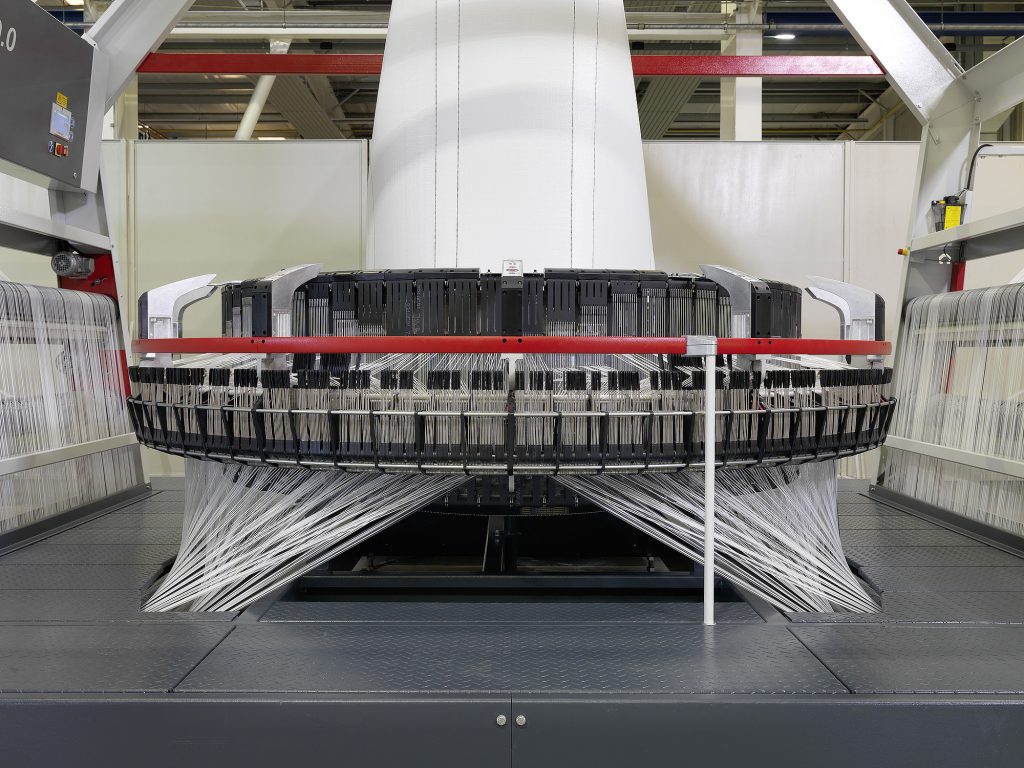
“Why should I choose BOPP woven bags over traditional packaging solutions?” This is a question we often hear from clients in industries ranging from agriculture to construction. The answer lies in three core pillars: superior durability, unmatched customization, and cost-efficiency for high-volume applications. At VidePak, with over 30 years of expertise and cutting-edge manufacturing infrastructure, we’ve refined BOPP (Biaxially Oriented Polypropylene) woven bags to meet the rigorous demands of global markets. Below, we dissect the science, craftsmanship, and quality control behind these bags, demonstrating why they are the optimal choice for heavy-duty and high-value applications.
The Manufacturing Process: Precision at Every Stage
BOPP woven bags are engineered through a multi-stage process that combines advanced machinery with meticulous quality checks. VidePak’s production lines, powered by Starlinger and Windmöller & Hölscher (W&H) equipment, ensure consistency and scalability. Here’s a breakdown of each phase:
1. Extrusion: Laying the Foundation
The process begins with extrusion, where virgin PP granules are melted and formed into thin films. VidePak’s 16 extrusion lines, equipped with Starlinger’s temperature-controlled systems, produce uniform films with tensile strengths exceeding 8–10 N/mm². Quality is ensured through real-time monitoring of melt flow index (MFI) and thickness variations (±0.02 mm tolerance).
2. Tape Drawing: Enhancing Strength
The films are slit into tapes and stretched biaxially to align polymer molecules, boosting tensile strength by 30–40%. Our W&H tape drawing machines maintain precise tension control, minimizing breakage and ensuring uniformity. Each batch undergoes stress testing to meet ISO 527-3 standards.
3. Weaving: Building the Fabric
Over 100 circular looms interlace tapes into a robust woven fabric. VidePak’s looms operate at 250–300 rpm, producing 150–200 g/m² fabrics with warp/weft balance ratios optimized for load-bearing (up to 50 kg dynamic weight). Automated sensors detect defects like loose threads or misweaves, rejecting substandard fabrics instantly.
4. Lamination and Coating: Adding Functionality
BOPP films are laminated onto the fabric using 30 lamination machines to enhance moisture resistance (≤0.1% water vapor transmission rate). For specialized applications, we apply PE or PP coatings via extrusion coating systems, achieving adhesion strengths >4 N/cm².
5. Printing: Branding with Precision
VidePak’s 12-color flexographic and rotogravure printers deliver high-definition graphics with Pantone color accuracy. Our ISO 12647-2 compliant process includes pre-press proofing and post-print abrasion testing (≥4 on the Sutherland Rub Scale).
6. Bag Making: Final Assembly
Sewing and heat-sealing machines convert laminated fabrics into bags. Our Starlinger CURO III systems produce up to 1,200 bags/hour with stitch densities of 8–10 stitches/inch, ensuring seam strengths >600 N.
Quality Control: A Culture of Excellence
At every stage, VidePak integrates quality checks aligned with ISO 9001 and FSSC 22000 standards:
- Raw Material Inspection: PP granules are tested for MFI, density, and UV stability.
- In-Process Monitoring: Real-time sensors track tape thickness, weave density, and lamination adhesion.
- Final Product Testing: Bags undergo load testing (ASTM D5264), drop tests (from 1.2m), and print durability assessments.
Our rejection rate remains below 0.5%, a testament to our rigorous protocols.
Why VidePak Stands Out
Founded in 2008 and led by CEO Ray Chiang, VidePak combines global expertise with local agility:
- Scalability: Annual production capacity of 200 million bags.
- Customization: Tailored solutions for valve bags, block-bottom designs, and multi-layer laminates.
- Sustainability: 100% recyclable materials and energy-efficient processes (30% reduced carbon footprint since 2020).
Technical Specifications at a Glance
| Parameter | VidePak Standard | Industry Average |
|---|---|---|
| Tensile Strength (warp) | 35–40 N/5cm | 25–30 N/5cm |
| Load Capacity | Up to 50 kg | 30–40 kg |
| Moisture Resistance | ≤0.1% WVT | 0.3–0.5% WVT |
| Print Durability | 4+ (Sutherland Rub Scale) | 3 |
FAQs: Addressing Client Concerns
Q: How does VidePak ensure consistency in bulk orders?
A: Our automated production lines and ERP-integrated workflows minimize human error, ensuring ±2% dimensional tolerance across batches.
Q: Can BOPP bags withstand extreme temperatures?
A: Yes. Our bags operate optimally between -20°C to 80°C, ideal for chemical and agricultural storage.
Q: What customization options are available?
A: From UV-resistant coatings to anti-static layers, we offer 15+ functional additives and custom printing in ≤7 days.
Conclusion: Partnering for Success
BOPP woven bags are not just packaging—they are a strategic asset for industries demanding reliability and brand impact. VidePak’s fusion of Austrian engineering (Starlinger/W&H) and 30+ years of expertise positions us as a leader in this space. Whether you’re packaging fertilizers, construction materials, or specialty chemicals, our solutions are engineered to exceed expectations.
For insights into advanced lamination techniques, explore our guide on BOPP Laminated Woven Bags or learn about valve bag customization.
References
- Knack Polymers. (2025). PP Woven Bags Manufacturing Processes.
- Lansu Packaging. (2025). Quality Control in Poly Woven Bag Production.
- Zibo Yundu Plastic Products. (2025). Industrial Bulk Packaging Standards.
- Anhui Tianda Enterprises. (2012). BOPP Bag Production Capacity.
- Wenzhou Sheng Hua Packing. (2008). Innovations in Woven Bag Printing.
Word count: 1,250